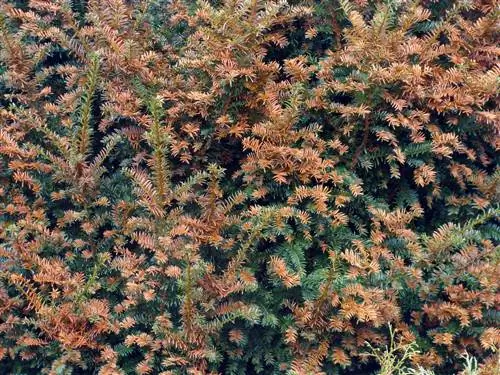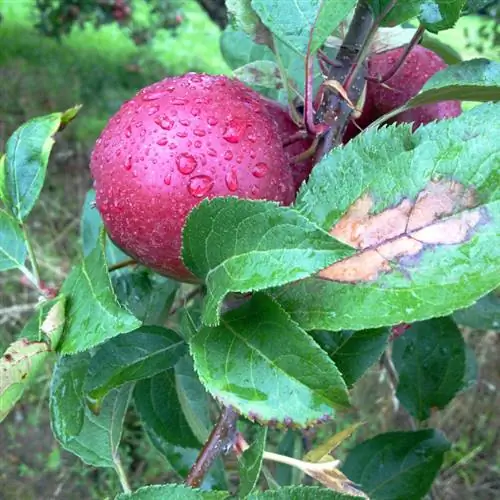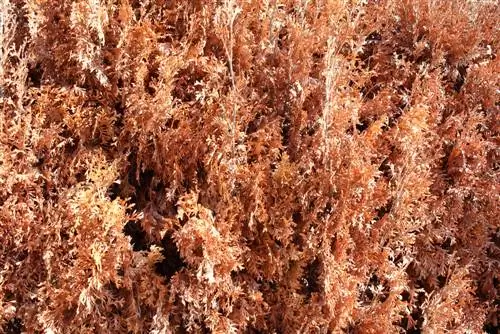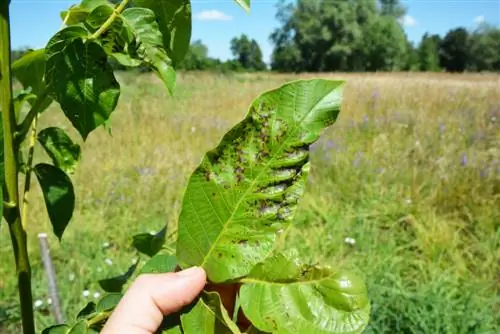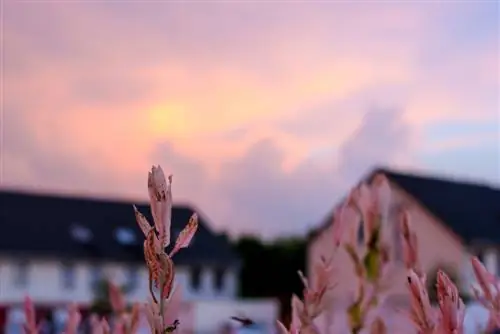- Author admin [email protected].
- Public 2023-12-16 16:46.
- Last modified 2025-01-23 11:21.
It happens more often that the juniper shows damage such as brown shoot tips and dried branches. The cause could be a suboptimal location, incorrect care measures or various fungi.

What fungal diseases affect junipers and how can they be treated?
Juniper can be affected by fungal diseases such as pear rust, shoot dieback and root rot. To prevent fungal infestation, resistant varieties should be planted, sufficient nutrient supply should be ensured and damaged shoots should be removed. If infested, fungicides can be used.
These fungal diseases can occur:
- Pear grid
- Instinct death
- Root rot
Pear grid
If a juniper is affected, elongated growths can be seen on the inner branches. The spores develop in these fruiting bodies and are spread by the wind in spring. They can travel more than 500 meters and infect other trees in the area. They prefer to settle on the leaves of pear trees.
Treatment and prevention:
- Inject plant tonic: decoction of horsetail and nettle
- cut off club-like thickenings
- remove affected branches
- clear heavily infested trees
- plant resistant varieties
Resistant varieties
The native juniper (Juniperus communis) is not affected by pear rust and should therefore be planted with preference. The creeping juniper (Juniperus horizontalis) and the scaled juniper (Juniperus squamata) are also considered resistant to the pear trellis.
Instinct death
If the shoot tips of the juniper suddenly turn brown, a harmful fungus may be responsible. But other causes can also lead to this symptom. You can recognize a fungal infection by black dots on the shoots. As a preventive measure against fungal infestation, you should ensure that there is a sufficient supply of nutrients to strengthen the plants and make them more resilient. Tonics from collected herbs improve the vitality of plants.
Remove damaged shoots regularly and dispose of them with household waste. Cut the shoots back at least three centimeters. You may need to cut back into the old wood. This is important so that no fungal threads remain and the pathogen is completely removed. Additionally, you should treat the plants with a fungicide.
Root rot
Under incorrect location conditions and care measures, root rot can occur. The reason for this is a substrate that is too wet and insufficient ventilation of the roots. They die and start to rot. Various fungal spores settle on the rotting plant parts and further accelerate the putrefaction processes. Therefore, make sure that the soil is well-drained and has a high sand content and prevent waterlogging. Too much moisture in the root area is often a problem with potted plants or bonsai.

